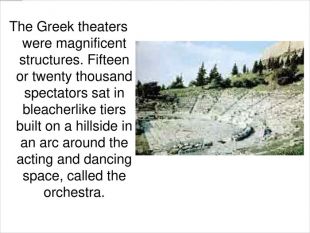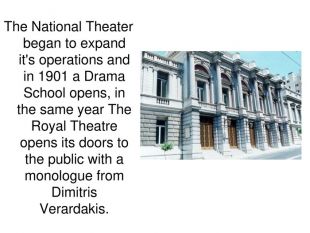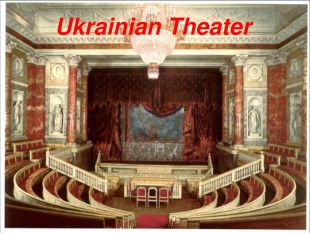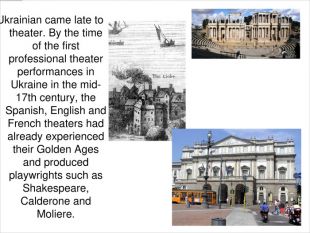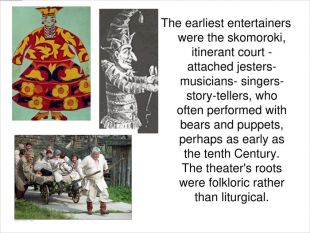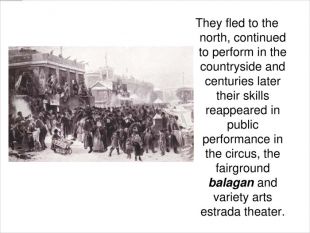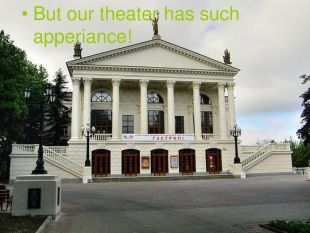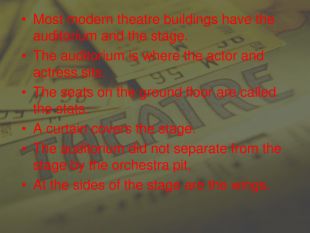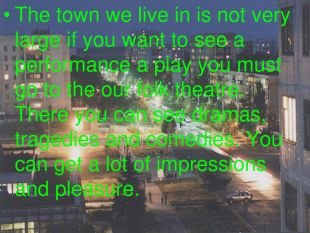Презентація з англійської мови до теми: "Театр"

![Theatre, thought, think [θ] Opera, operetta [o] Music [ju:] Ballet [ж] Theatre, thought, think [θ] Opera, operetta [o] Music [ju:] Ballet [ж]](/uploads/files/48412/223717/239550_images/2.jpg)




































The word τραγοιδία, from which the English word tragedy is derived, is "goat-men sacrifice song". Until the Hellenistic period, all tragedies were unique pieces written in honor of Dionysus, so that today we only have the pieces that were still remembered well enough to have been repeated when repetition of old tragedies became fashion. It was considered a decline of the original, one-time-played tragedy.
The theatre was originally founded in 1880 with a grant from George I and Efstratios Rallis to give theatre a permanent home in Athens. The foundations for this new project were laid on Agiou Konstantinou Street and the building itself was designed by the famous Austrian architect noted for many other public buildings in Athens at the time, Ernst Ziller.
The church was by turns friendly and hostile to the theater. They abhorred the skomoroki but encouraged church-sponsored theater. One of their earliest predictions in the 1400s was the church produced "Fiery Furnace" in Kiev where townspeople masquerading as Chaldens burned three choirboys impersonating Israelite youth in a pulpit-cauldron.
A theater constructed in Red Square in 1702 called "The Comedy Chramina" ("The Temple of Comedy") was used by Kunst's German troupe and performed plays by Moliere, Calderone and other European playwrights. Comic interludes were popular. No formal theatrical tradition was established and the theater was closed in 1704.
Most modern theatre buildings have the auditorium and the stage. The auditorium is where the actor and actress sits. The seats on the ground floor are called the stats. A curtain covers the stage. The auditorium did not separate from the stage by the orchestra pit. At the sides of the stage are the wings.


про публікацію авторської розробки
Додати розробку

















